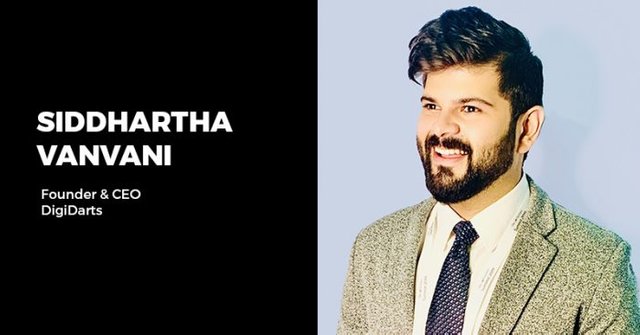DigitDart’s Siddhartha Vanvani pens his thoughts on the paradigm shift in performance marketing business amidst and post-COVID-19 situation.
The coronavirus pandemic or COVID-19 has been a major influence on all walks of life, and businesses including digital marketing and performance marketing are no different.

Businesses have suffered huge setbacks and many of them have either shut up shop or have ventured into completely different markets altogether. Brands have had to make major tweaks to their messaging to the public, ensuring protection and safety as a primary factor to be addressed and your goods & services became secondary. However, we cannot just paint a picture of just grim times businesses have faced. Rather, we are here to discuss how in the COVID-19 impacted world, performance marketing has evolved to enable brands to keep delivering value to the customers online.
As people are urged to limit their movements and avoid mass gatherings, people are turning to their online devices and the internet to restore some sense of “normalcy” as we so aptly name it. Keeping this in mind, brands have come to realize, their brand’s communication and value addition is being evaluated by the masses at a much larger scale which gives them hope. Hope that they will be able to acquire and retain new consumers.
Let’s first dive into how brands navigated through their performance marketing efforts during coronavirus times.
Said the right things
The first and most significant tweak performance marketers had to make, are tweaks to their communication. Every brand, no matter what sphere of the market they come from, had to start using terms like “Contactless Delivery” “Right at your doorstep”.
Take the food delivery giant Zomato for example, they did a whole series of social media posts to indicate their cleanliness system and giving the option to go for a contactless delivery with your food items.
Understood where the attention is
In general, People being left to their own devices, due to lockdown restrictions, were more ready to shop online than ever before. It did not matter that the shipments were delayed by a whole 15 days at a stretch, people just wanted to order things around the house to inculcate their pre-COVID-19 lifestyle in their homes. From gym equipment to snacking stocks, the online shoppers showcased behaviours never seen before.
Social Media networking sites were full of new, eager content creators and businesses were no different. Since physical touchpoints were more or less eradicated, all businesses established themselves to adjust to the new digital world. The overload of new and old brands popping up with sponsored ads made one thing clear, businesses don’t want to stop advertising in the virtual world.
Industry Shift
Many brands had to take a complete U-Turn on what industry they were in. Take examples of clothing brands like Lotus Trends, a wholesale manufacturer of Jeans in India, they made a drastic switch from selling jeans to selling safety masks. What’s more, almost any famous brand you knew, either included a grocery delivery section to their services or made a completely new line of business to include this in their services.
The Post COVID-19 World
The post-COVID-19 world has one major takeaway for performance marketers, i.e. Heightened consumer awareness.
Since, in the COVID-19 world, there was an influx of sponsored ads and highly competitive marketing strategies deployed by every brand, consumers have seen more brands pop up on their phones, devices and social media sites than ever before and thus the heightened awareness.
For brands working in sectors like Finance, Beauty products, and on-demand media, the CPCs had dropped so significantly that they were arguably making more money than before.
Across advertising channels, there was a stark dip in advertising costs with Facebook showcasing a 21% dip in advertising costs according to a report by the Wall Street Journal.
However, not every advertising platform turned out to be as profitable. A report by Wordstream claims, a 23% drop in ad impressions and conversion rates.
The post-COVID-19 situation for brands stands at a digital crossroads. Though some industries have been revolutionized forever, some brands and industries need to adopt the increasingly virtual world with more open arms.